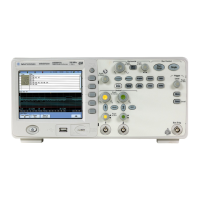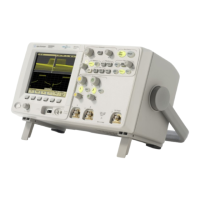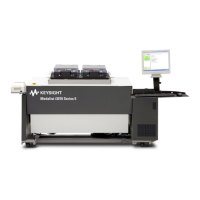Chapter 1 Introducing the Agilent 5530
Overview of Laser Calibration
Getting Started Guide 1-5
1
Overview of Laser Calibration
The accuracy and precision of a multi-axis machine is determined
primarily by the machine’s geometry. To fully analyze the machine’s
positioning accuracy, you need to measure the following geometric
characteristics (each of which contributes to positioning accuracy and
precision at any point within a machine’s work zone):
• the six degrees of freedom for each measurement axis
• squareness between measurement axes
• parallelism between measurement axes
The six degrees of freedom can be grouped as follows (see Figure 1-2):
• angular displacement about the axis measured
–pitch
–yaw
–roll
• translational (perpendicular) displacement about the axis measured
– straightness in the horizontal plane
– straightness in the vertical plane
• linear displacement
Squareness and parallelism of travel between two or more axes
characterize how the axes are positioned relative to each other. Both
measurements are accomplished by performing two straightness
measurements, one of which is made through a 90 degree reference (the
optical square).
The Agilent 5530 uses a laser to provide the data you need to accurately
analyze the machine’s geometry. Laser measurement systems provide
high accuracy over long distances—up to 80 meters (260 feet) with long
range optics — by analyzing the light from a low powered helium-neon
laser. Since the wavelength of this light is precisely known, laser
